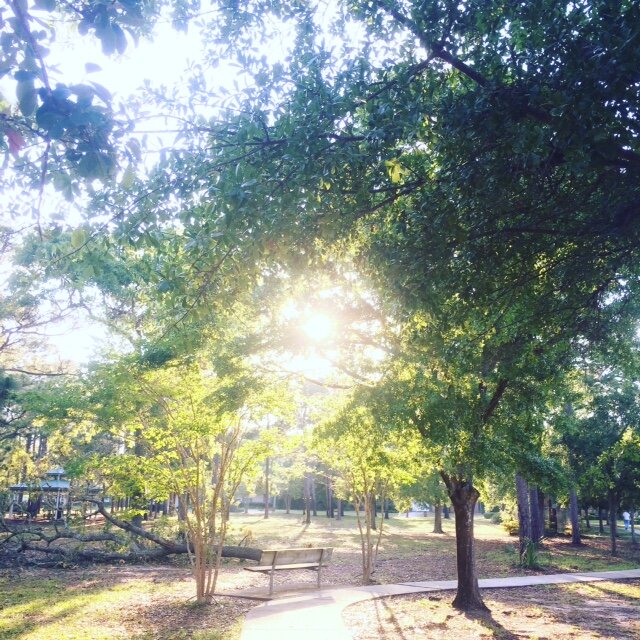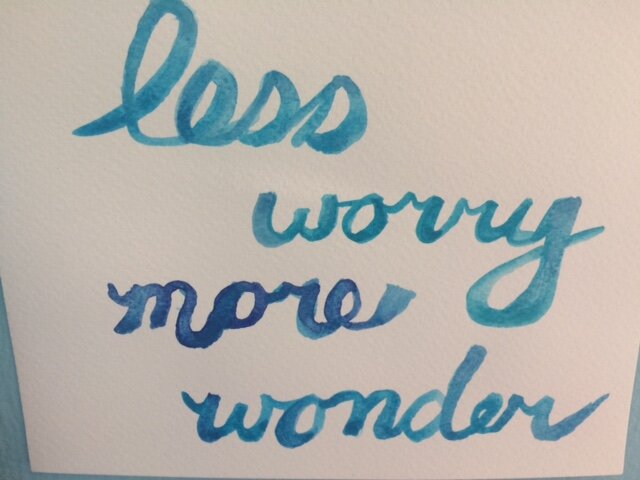It’s spring here in North America, and I’ve been extremely grateful for the ability to spend time outside during this stressful period. Being in nature has multiple benefits and can make you feel calmer and happier almost instantly. Below is a post I shared last year about the power of being outside; I feel like it’s more valuable now more than ever, so here it is again. It focuses on the morning, but going out at any time is beneficial—do what works best for you.
One of the best things you can do for yourself each day is to go outside in the morning. It’s so simple, but it can have a major positive impact on how you feel.
Getting sunlight first thing makes you more alert and spurs production of both serotonin, which boosts your mood, and vitamin D, which is essential for good health and supports your immune system. Serotonin production is spurred when sunlight enters your eyes, so spend some of your time outside without sunglasses. Spend about five to ten minutes without sunscreen as well, since getting sunlight on your skin is what triggers vitamin D production. (Be sure you’re outside before 10 a.m., as the sun’s rays are strongest between 10 a.m. and 2 p.m.)
Sunlight exposure in the morning also helps regulate your sleep cycle. It does this by reinforcing your body’s circadian clock, which runs many of your biological processes. Our circadian clock revolves around the patterns of the sun; in fact, the word “circadian” is Latin for “around day.” At sunset, our body releases melatonin to help us sleep. At sunrise, melatonin production is decreased to help us wake up. Exposure to sunlight in the morning enhances the suppression of melatonin. This is most effective if you go outside within two hours of waking up.
And if you need another good reason, here you go: nature is a portal to peace. Being outside grounds and centers us. The natural world is soothing; we are animals, after all, and being outdoors feels…well, natural! Simply stepping outside can instantly calm us down when we are stressed. Our breathing slows as we unconsciously mirror the peaceful rhythms of nature. We are taken beyond ourselves as we pay attention to the sights, scents, and sounds around us. We are refreshed and rejuvenated.
Life coach Wendy Battino lives in Alaska, but makes a point of going outside and touching the ground every day, regardless of the weather. She says, “Getting outside is a powerful way to get grounded instantly. No matter where you live, you can find nature—even in the busiest and biggest cities like London, you can find something natural to connect with. … It’s powerful to do something physical to connect to the earth in the morning. I step outside barefoot, regardless of the weather. Even if it’s forty degrees below zero, I can at least stand on the porch for a little bit, or I can scoop up some snow and wash my face with it.”
Ways to get your nature fix:
· Take your morning coffee or tea into your yard and sip slowly, soaking in the sunshine.
· Go for a walk and, instead of listening to music or talking on the phone, enjoy the sights and sounds you encounter.
· Stand barefoot on a patch of grass or dirt and really feel your connection to the earth.
· Find a “sit spot” on the ground and sit in silence while you breathe deeply and devote your attention to the natural world around you. What do you see—a tiny snail, or a beautiful flower, or puffy white clouds scudding across the sky? What sounds can you hear—birdsong, the wind rustling through the trees, crickets chirping? What scents do you smell—the earthiness of the ground beneath you, freshly cut grass, the perfume of nearby flowers? Feel yourself relaxing as you ease into nature’s slower pace.
In the fascinating book Joyful, Ingrid Fetell Lee says, “Access to nature has been shown to improve sleep quality, decrease blood pressure, and even lengthen lifespans. Large-scale studies … show that people living in greener areas have a lower incidence of anxiety and depression and display an ability to recover more quickly from stressful life events than those in less green areas. One possible reason is that spending time in nature decreases blood flow to a part of the brain … which is associated with the tendency to brood over problems. Natural settings literally make us more carefree.”
Tomorrow morning, try going outside and letting the sunshine and fresh air work their magic on you. Your body and your mind will thank you!









